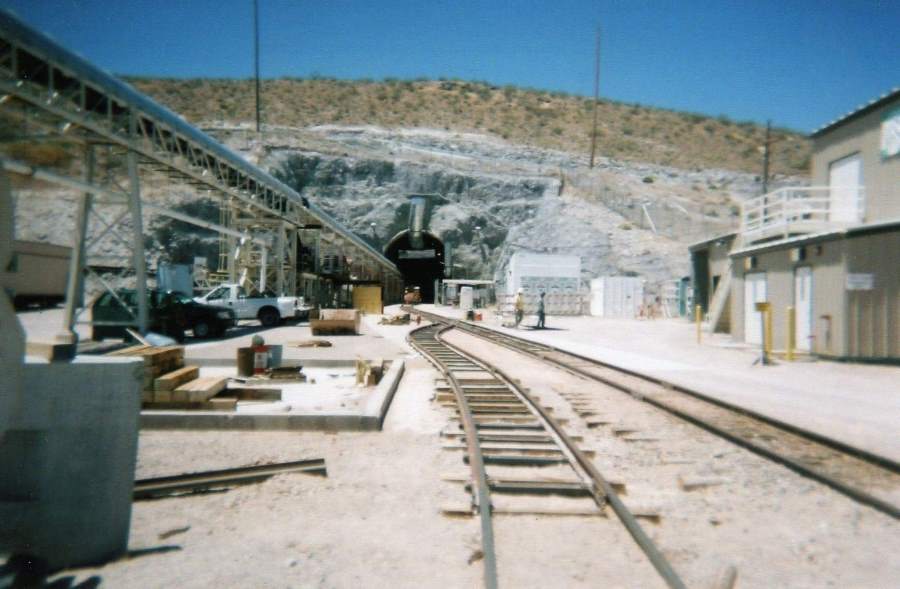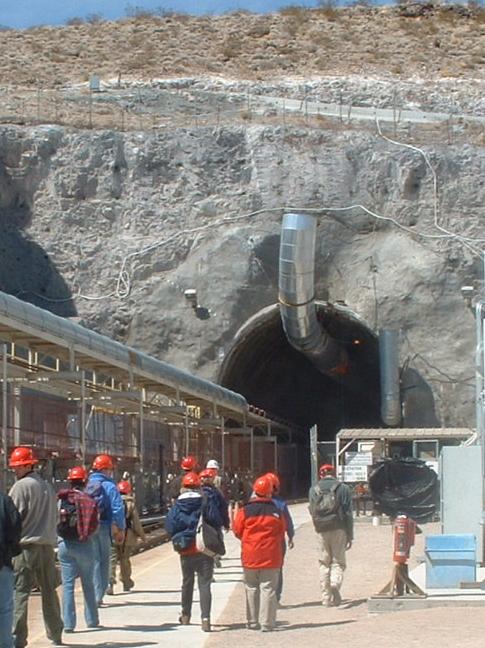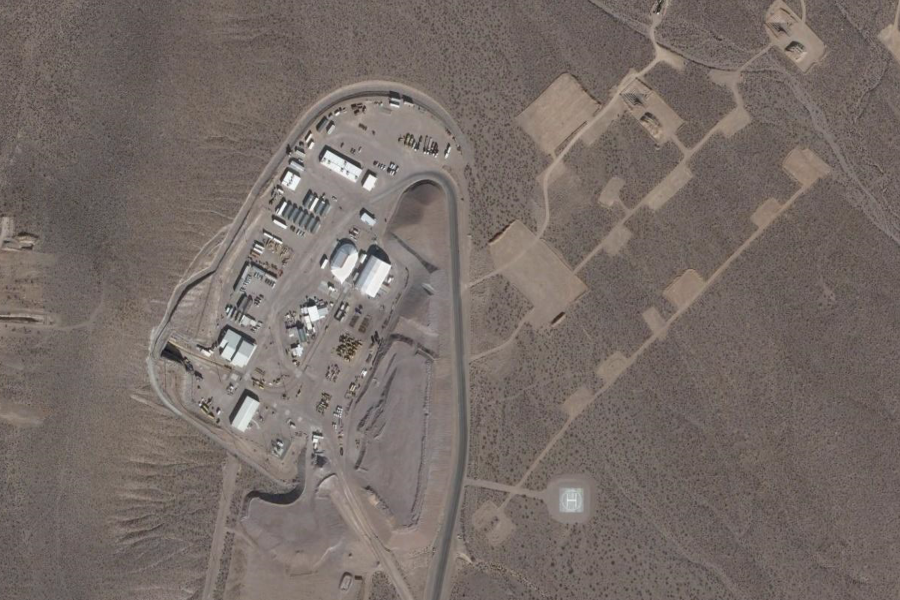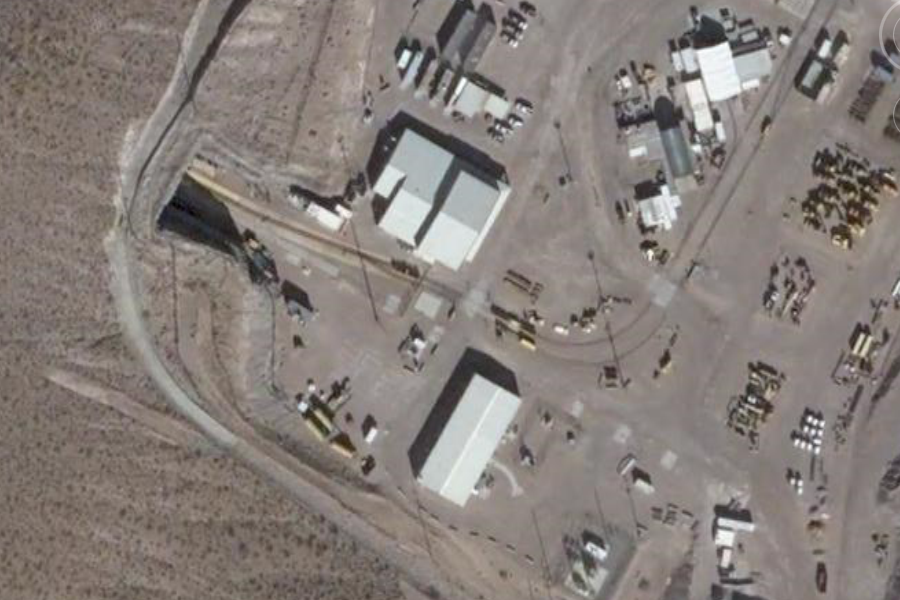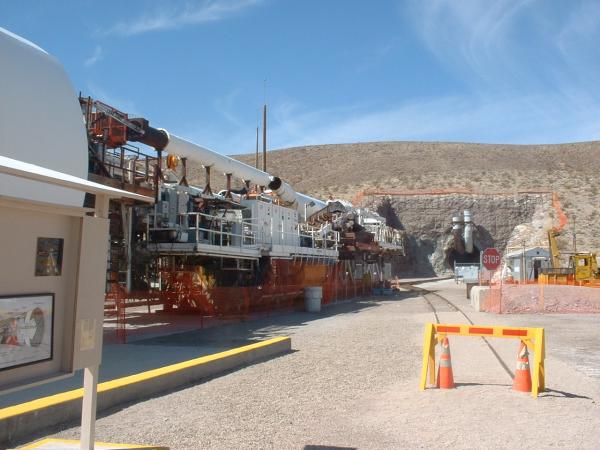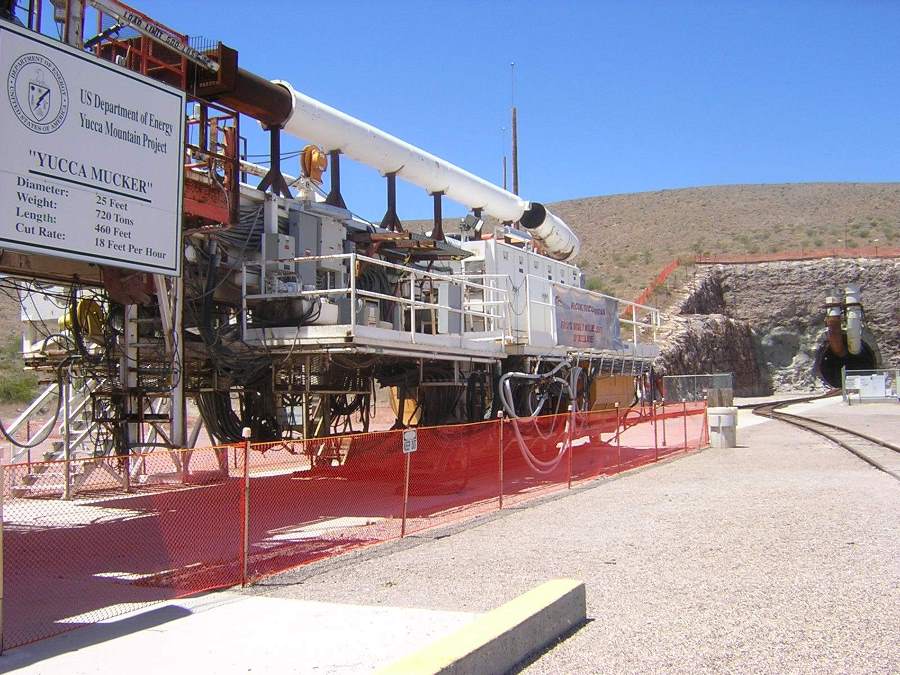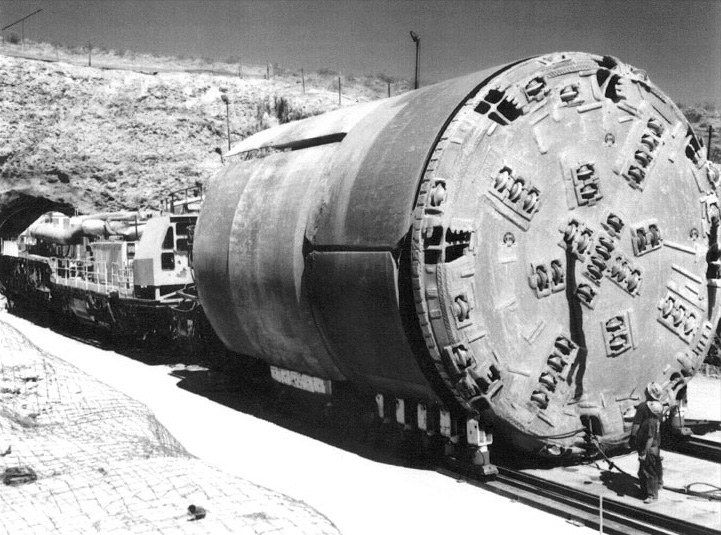|
|
|||
|
North Tunnel Entrance ..
Yucca Mountain Repository is the proposed United States Department of Energy deep geological repository storage facility for spent nuclear reactor fuel and other radioactive waste. The repository is located in a desert on federal land adjacent to the Nevada Test Site in Nye County, Nevada, about 80 miles from the Las Vegas metropolitan area. The repository lies within Yucca Mountain, a ridge line in the south-central part of the U.S. state of Nevada. The ridge is composed of volcanic material (mostly tuff) ejected from a now extinct caldera-forming supervolcano. The idea of storing radioactive waste in Yucca Mountain is controversial. Opponents argue that climate, erosion, earthquakes, and other natural forces would make it an unstable and unsuitable place for storage. The Department of Energy was to begin accepting spent fuel at the Yucca Mountain Repository by January 31, 1998 but has yet to do so because of a series of delays due to legal challenges, allegations of fraudulent geologic analysis, concerns over how to transport nuclear waste to the facility, and political pressures resulting in underfunding of the construction. There is currently no official date set for opening the facility. The US Department of Energy (DoE) has submitted a license application to the Nuclear Regulatory Commission (NRC) for the construction. The preliminary process of checking over and 'docketing' the application will take until late 2008, and NRC then has a statute timetable to complete its safety analysis and public hearings. The earliest estimated date for starting construction is 2013. The Office of Civilian Radioactive Waste Management's current projected completion date for the project is 2017, but even if the NRC's review of the project goes well, the future of Yucca Mountain would still depend on the political climate in the USA. Congress voted to cut the project's FY2008 budget from $494 million to $390 million, the lowest award since 2002, when the Yucca Mountain site was approved, and continuing a four-year trend in which awards have been significantly below the amounts requested by DoE.
SOURCE: YUCCA MOUNTAIN |
|||
|
North Tunnel Entrance +36° 51' 8.37", -116° 25' 43.27" ..
The Facility The purpose of the Yucca Mountain project is to comply with the Nuclear Waste Policy Act of 1982 and develop a national site for spent nuclear fuel and high-level radioactive waste storage. The present prime contractor for the project is Bechtel SAIC (a consortium of government contractors Bechtel Corporation and Science Applications International Corporation). The consortium employs about 900 on the project in 2008. The main tunnel of the Exploratory Studies Facility is U-shaped, 5 miles (8 km) long and 25 feet (8 m) wide. There are also several cathedral-like alcoves that branch from the main tunnel. It is in these alcoves that most of the scientific experiments are conducted. The emplacement drifts (smaller diameter tunnels branching off the main tunnel) where waste will be stored have not been constructed since they require a construction authorization by the Nuclear Regulatory Commission per 10CFR 63. The Nuclear Waste Policy Act limits the capacity of the proposed Yucca Mountain repository to 63,000 MT of initial heavy metal in commercial spent fuel. The 103 U.S. commercial reactors currently operating will produce this quantity of spent fuel by 2014, assuming that the spent fuel rods are not reprocessed. Currently, the US has no civil reprocessing plant. As of 2008, nine billion US dollars had been spent on the project which has made Yucca Mountain one of the most studied pieces of geology in the world. The Department of Energy (DOE) estimates that it has over 100 million U.S. gallons of highly radioactive waste and 2,500 metric tons (2,800 short tons) of spent fuel from the production of nuclear weapons and from research activities in temporary storage. The cost of the facility is being paid for by a combination of a tax on each kilowatt hour of nuclear power and by the taxpayers for disposal of weapons and Naval nuclear waste. Based on the 2001 cost estimate, approximately 73 percent is funded from consumers of nuclear powered electricity and 27 percent by the tax payers. The latest Total System Life Cycle Cost presented to Congress on July 15, 2008 by Director Sproat is $90 billion dollars. This cost,however, can not be compared to previous estimates since it includes a repository capacity about twice as large as previously estimated over a much longer period of time (100 years vs 30 years). Additionally, the cost of the project continues to escalate due to the lack of sufficient funding to most efficiently move forward and complete the project. The tunnel boring machine (TBM) that excavated the main tunnel cost $13 million and was 400 feet (125 m) in length when in operation. It now sits at its exit point at the South Portal (south entrance) of the facility. The short side tunnel alcoves were excavated using explosives. SOURCE: YUCCA MOUNTAIN |
|||
|
South Tunnel Entrance +36° 49' 43.04", -116° 26' 11.23" ..
Picture of the South Portal entrance to Yucca Mountain. The large device to the left is the TBM that excavated the main tunnel which is called the Exploratory Studies Facility. The tunnel is 5 miles long and is U-shaped. Repository will be 1000 feet below the surface of the mountain and 1000 feet above the water table. Image by Daniel Mayer taken on 2002-03-25 © 2002 and released under terms of the GNU FDL.
..
|
|||
|
|||
| FAIR USE NOTICE: This page contains copyrighted material the use of which has not been specifically authorized by the copyright owner. Pegasus Research Consortium distributes this material without profit to those who have expressed a prior interest in receiving the included information for research and educational purposes. We believe this constitutes a fair use of any such copyrighted material as provided for in 17 U.S.C § 107. If you wish to use copyrighted material from this site for purposes of your own that go beyond fair use, you must obtain permission from the copyright owner. | |||
|
|
